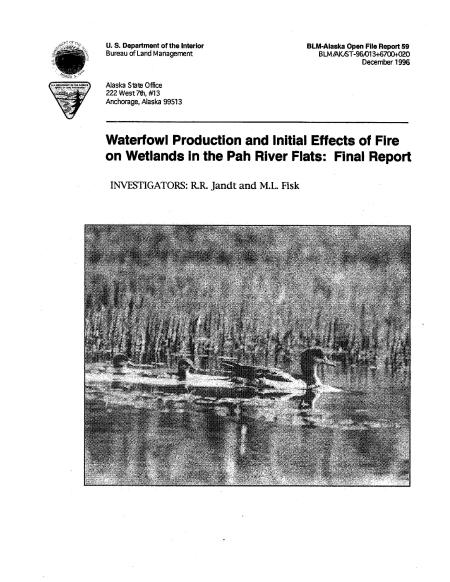Waterfowl Production and Initial Effects of Fire on Wetlands in the Pah River Flats: Final Report

Waterfowl brood surveys were conducted in the Pah River Flats, Alaska during July of 1995. Duck production was not significantly different between plots burned in a 1992 wildfire and unburned plots for the third year following the burn. Fire did not produce any statistically detectable positive or negative effects on waterfowl production or habitat in the first three years following the fire. Fewer diver broods were found in burned ponds during all three years following the fire. Dabbler broods were more numerous on moderately burned ponds and less numerous on severely burned ponds, especially in the first two years. The four-year average for waterfowl produced from this wetlands complex was 1,147±180 young ducks annually, or 16.4 young ducks/km2. American wigeon (Anas americana), greater scaup (Aythya marila) and green-winged teal (Anas crecca) were the predominant species.
